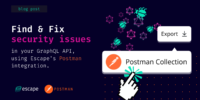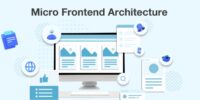Augmented Reality (AR) and Virtual Reality (VR) technologies have rapidly evolved, creating immersive experiences and transforming various industries. As the demand for AR/VR applications continues to grow, developers face the challenge of creating innovative and high-quality experiences at an accelerated pace. In this article, we’ll explore quick tips to speed up AR/VR app development, helping developers stay ahead in this dynamic and exciting field. ️
1. Define Clear Objectives
Before diving into development, clearly define the objectives of your AR/VR app. Understand the problem it solves, the target audience, and the key features that will make it stand out. A well-defined scope helps in making decisions quickly during the development process.
2. Choose the Right Development Tools
Selecting the right development tools can significantly impact the speed and efficiency of your AR/VR project. Leverage frameworks and platforms specifically designed for AR/VR development, such as Unity3D, Unreal Engine, ARCore, or ARKit. These tools offer ready-to-use components and simplify complex processes.
3. Utilize Pre-built Assets
Accelerate development by using pre-built 3D models, textures, and animations. Online marketplaces and repositories offer a wide range of assets that can be integrated seamlessly into your AR/VR app. This not only saves time but also ensures high-quality visuals.
4. Implement Cross-platform Development
Maximize your reach by implementing cross-platform development. Choose frameworks that support both iOS and Android, allowing you to write code once and deploy it on multiple platforms. This approach streamlines development and maintenance efforts.
5. Prioritize User Experience (UX)
Emphasize a user-centric approach to streamline development. Prioritize features that enhance user experience and engagement. Intuitive navigation, responsive interactions, and compelling visuals contribute to the overall success of your AR/VR app.
6. Optimize for Performance ⚙️
Optimize your AR/VR app for performance to ensure smooth and immersive experiences. Implement techniques such as asset bundling, level of detail (LOD) optimization, and efficient rendering. Performance optimization is crucial for user satisfaction.
7. Iterative Development with MVP
Adopt an iterative development approach by creating a Minimum Viable Product (MVP). Launching a basic version of your AR/VR app allows you to gather user feedback early and make necessary improvements. This agile approach speeds up the development lifecycle.
8. Collaborate with AR/VR Communities
Engage with AR/VR communities, forums, and developer groups. Collaborating with other developers, sharing experiences, and seeking advice can provide valuable insights and solutions to challenges. Learn from the collective knowledge of the community.
9. Automate Testing Processes
Implement automated testing to identify and fix bugs quickly. Automated testing frameworks can simulate user interactions and scenarios, ensuring the stability and reliability of your AR/VR app. Quick identification of issues accelerates the development process.
10. Stay Updated with AR/VR Trends
AR/VR technologies are rapidly evolving. Stay informed about the latest trends, tools, and best practices in the AR/VR development space. Continuous learning and adaptation to emerging technologies keep your development process efficient and future-proof.
Conclusion: Accelerating AR/VR Innovation
AR/VR app development is an exciting journey that requires a balance between innovation and efficiency. By defining clear objectives, choosing the right tools, and prioritizing user experience, developers can accelerate the creation of immersive and impactful AR/VR applications. Embrace these quick tips, stay agile, and propel your AR/VR projects to new heights!








